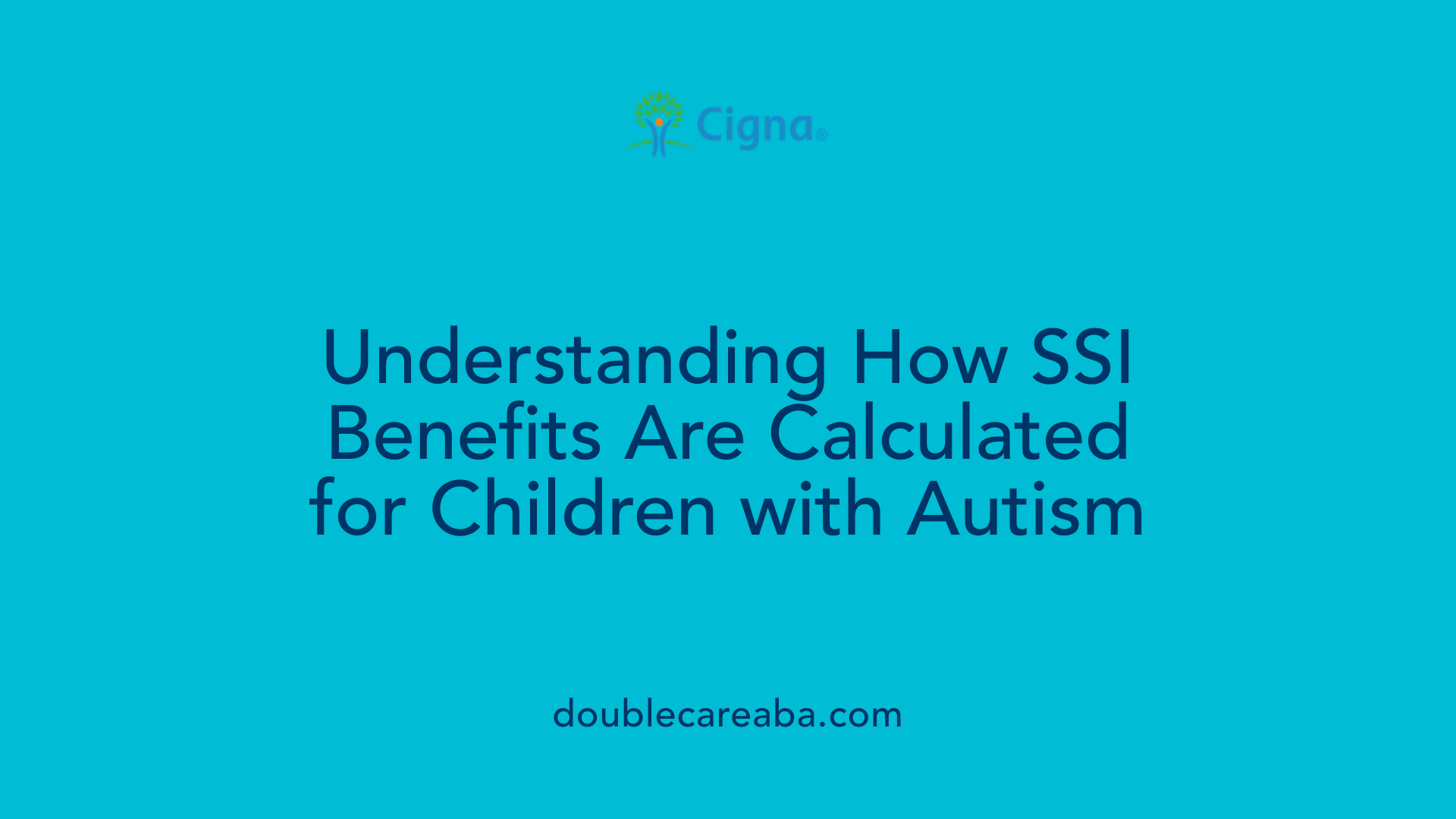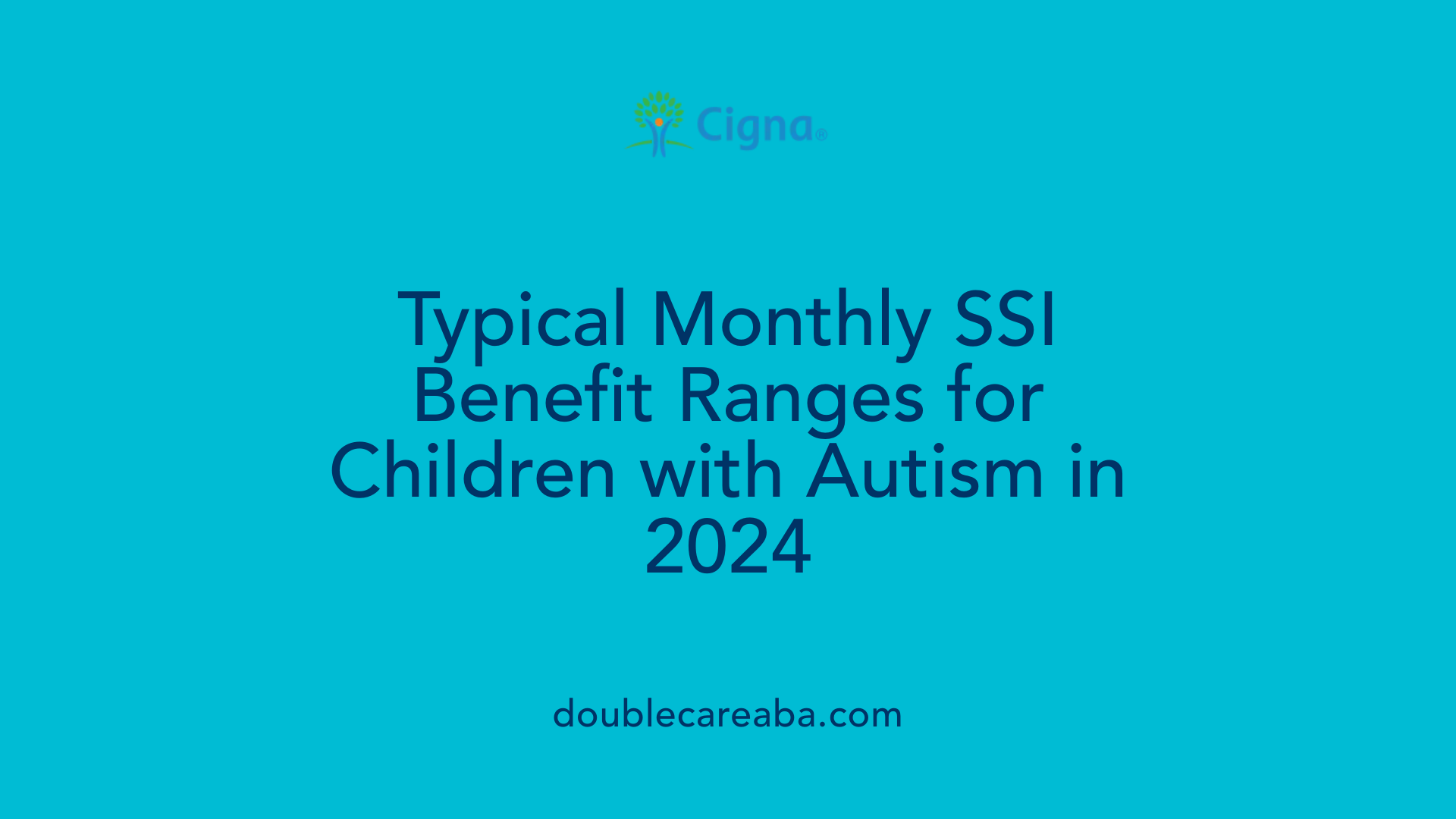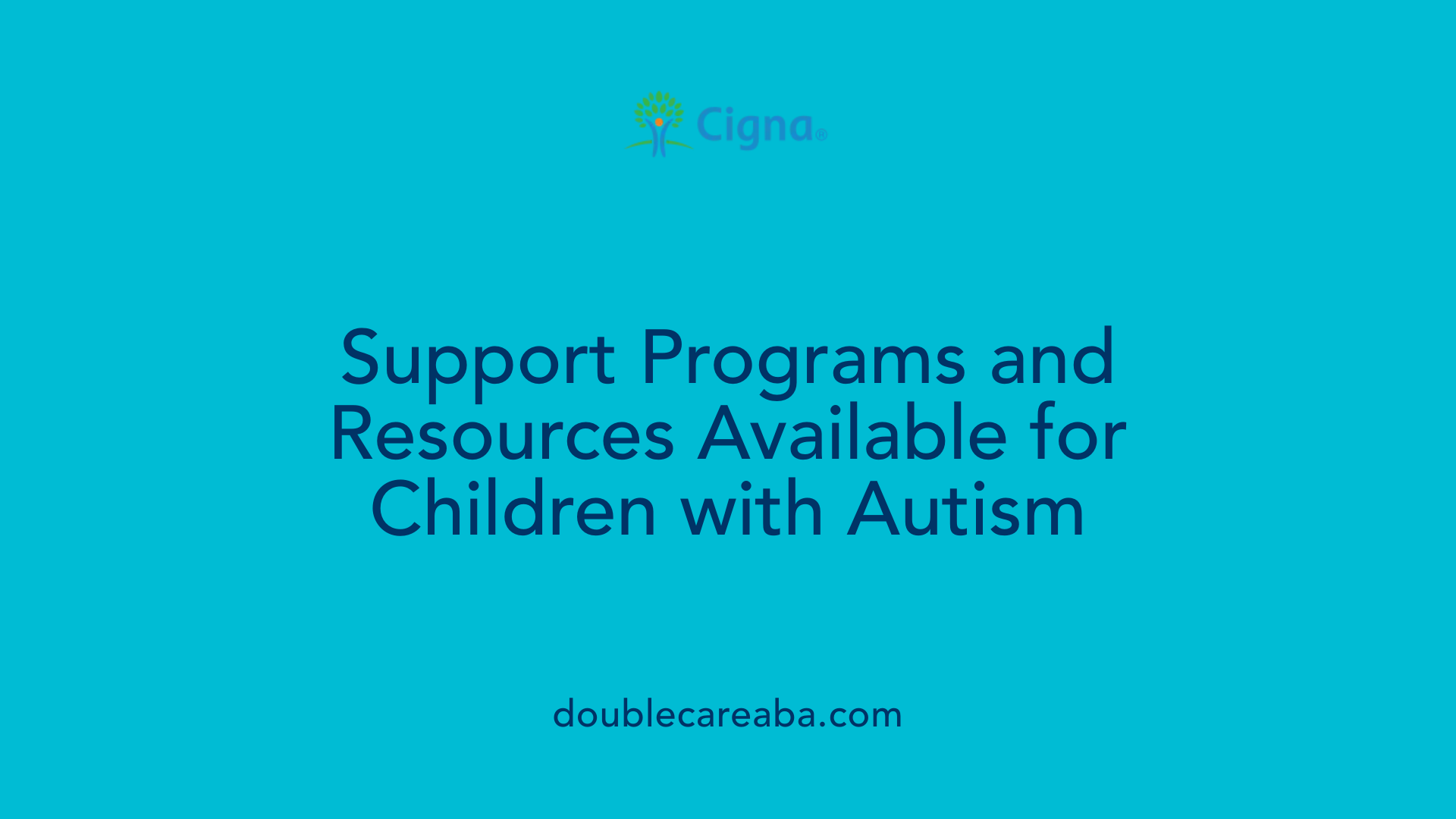Understanding SSI Benefits for Children with Autism
For families navigating the challenges of autism spectrum disorder (ASD), understanding financial support options can be vital. The Supplemental Security Income (SSI) program offers essential financial assistance to eligible children with autism, helping cover medical, therapeutic, and educational expenses. This comprehensive guide explores how much children with autism can receive from SSI, the criteria for eligibility, and the application process.
Eligibility Criteria for SSI Benefits in Children with Autism

What are the eligibility criteria for SSI benefits for children with autism?
To qualify for Supplemental Security Income (SSI) benefits, children with autism must meet several medical and financial requirements. Legally, a child must be under age 18 to be eligible, but if they are still in school at age 18 and under 22, they can continue receiving benefits.
Medically, the child needs to have a diagnosis backed by documentation demonstrating significant impairments caused by autism spectrum disorder (ASD). Specifically, the diagnosis should include deficits in social interaction, communication, and the presence of restricted or repetitive behaviors. The child's condition must result in either "extreme" or "marked" limitations in key areas such as understanding information, social interactions, concentration, or self-management.
The SSA evaluates these limitations through thorough medical and educational records. The documented impairments should show they have lasted or are expected to last at least 12 months or are likely to result in death.
Financially, eligibility hinges on the household's income and assets. The family's income must be at or below the federal benefit rate (which for 2023 is $914 per month), and assets must be below certain thresholds (e.g., less than $2,000 for a single child).
Additionally, "deeming" rules apply, meaning parental income and resources are considered when assessing eligibility for children living at home. These rules can reduce the benefit amount based on the family’s income, but certain benefits or circumstances, like receiving TANF, can exempt a child from deeming.
Together, medical evidence confirming the severity of autism and financial limits based on household income and resources are essential for eligibility. Once approved, children with autism have access to SSI benefits that assist with healthcare costs, therapeutic services, and related needs. Medicaid typically accompanies these benefits, providing further health support.
How SSI Benefit Amounts Are Calculated for Children with Autism

How do SSI benefit amounts get calculated for children with autism?
SSI benefits for children diagnosed with autism are primarily determined by the federal benefit rate (FBR), which is revised annually to reflect economic changes. As of 2023, the full federal SSI benefit amount is $841 per month for an individual. However, the actual benefit a child receives depends significantly on the family's income and resources.
The Social Security Administration (SSA) looks at the household’s financial picture, including income from parents and guardians, and applies a specific calculation to determine how much of the family’s income is deemed to be available to the child. This process, known as "deeming," considers ineligible household members and income types, such as earned income and unearned income, to arrive at an adjusted figure.
To qualify medically, a child must provide documented evidence of autism, showing deficits in social interaction, communication, and repetitive behaviors. This evidence must also establish that the child's limitations are marked or extreme in areas like understanding information, socializing, or self-management.
Once the medical and financial eligibility are established, the SSA calculates the child's benefit amount by subtracting the deemed income and resources from the federal benefit rate. The final monthly payment can vary based on the family's financial circumstances.
Most children meeting these criteria also qualify for Medicaid, which offers vital healthcare benefits such as therapy, medication, and support services that help children with autism manage their condition.
Variability based on household circumstances
The amount of SSI benefits can fluctuate depending on household income levels and composition. For example, larger families with higher combined incomes may see reduced monthly benefits because more income is deemed available to the child. Additionally, states may supplement these federal payments through state-specific programs, which can increase the total amount received.
In summary, the calculation process is comprehensive, capturing both a child's medical needs and familial financial capacity, ensuring that the benefits provided support their health, education, and well-being within the household's means.
Typical SSI Benefit Ranges for Children with Autism

What is the typical range of SSI benefits for children with autism?
In 2024, the monthly SSI payments for children diagnosed with autism typically range from around $750 to nearly $943. The federal benefit rate (FBR), which sets the baseline for SSI payments, is approximately $943. The actual amount a child receives is determined by various factors, including household income, resources, and specific rules such as deeming — where parental income and assets are considered.
Children with autism must meet SSA's criteria for disability, showing significant impairments in social interaction, communication, and behavior. Medical documentation must confirm these functional limitations are severe and lasting, usually at least 12 months, to qualify for benefits.
Sometimes, children with autism who have severe conditions may qualify for expedited processing through Compassionate Allowances, potentially increasing their chances of faster approval and higher benefits. Overall, while the federal rate provides a ceiling, the final SSI benefit is tailored to individual circumstances, aiming to support families in managing the costs associated with autism-related needs.
Variations in benefits caused by household income
The actual monthly SSI award for children with autism is influenced by the household’s income and resources. The Social Security Administration applies a process called deeming, which considers a portion of the parents' income and assets when the child lives with them.
For example, a child's benefit could be reduced based on the deeming formula, which subtracts certain expenses and exemptions from parental income before calculating the child's eligibility and benefit amount. A typical scenario might see a child living with one parent, with the parent's income after deductions around $1,950, resulting in a benefit of roughly $553 for that month.
Impact of deeming rules
Deeming rules are important for understanding potential benefits. They involve calculating how much income parents contribute to the child's needs. Resources, such as savings or property, are also considered, with limits often around $2,000 for a single child.
When parental income exceeds certain thresholds, the child's SSI benefit may decrease or even be denied. Conversely, in households with lower income or resources, the child could receive close to the maximum federal benefit.
Difference between federal and state supplements
While the federal SSI benefit rate for 2023 was $841 per month, some states provide additional payments called state supplements. These supplements vary widely: some states add a fixed amount to the federal benefit, increasing the overall benefit for eligible children.
It's important to note that state supplements do not reduce the federal SSI payment. Instead, they are extra funds provided by state governments to help cover living costs.
Adjustments for changes in income
Parents and guardians must regularly report changes in income, household composition, or resources to SSA. These updates can affect ongoing eligibility and benefit amounts.
Receiving an increase in household income, such as new employment or assets, might result in a reduced benefit or loss of eligibility. Conversely, a decrease in income or resources may increase the child's SSI payment or restore eligibility.
From applying through periodic reviews, the adjustments ensure that SSI benefits accurately reflect the child's current need and financial situation.
| Aspect | Details | Additional Notes |
|---|---|---|
| Federal benefit rate (2024) | $943 per month | Baseline amount for SSI payments |
| Typical benefit range | approximately $750 - $943 | Varies based on individual circumstances |
| State supplement | Varies by state, added on top of federal benefit | Not deducted from federal SSI; supports local cost of living |
| Income limits for eligibility | Around $914/month (2023 federal benefit rate) for income, assets < $2,000 | Household income and resources determine eligibility |
| Deeming considerations | Parental income and resources considered when child lives at home | Reduces benefit based on household income |
| Medical criteria | Significant, lasting functional limitations in communication, social interaction | The basis for medical eligibility |
| Application process | Medical documentation, household income proof, potentially medical exams | Essential for qualification |
| Special programs | Compassionate Allowances for severe cases, expedited processing | Helps children with serious conditions access benefits faster |
Search for more: SSI benefit range children autism.
Application Process for Children with Autism
What is the process to apply for SSI benefits for a child with autism?
Parents or guardians interested in securing SSI benefits for a child diagnosed with autism can initiate the application in several ways. The most convenient methods include applying online through the Social Security Administration (SSA) website, making a phone call to a local SSA office, or visiting the office in person.
Preparation is essential before applying. Families should gather comprehensive documentation that demonstrates the child's autism diagnosis and how it impacts their daily functioning. This includes medical records, evaluations from healthcare providers, school reports, and assessments from specialists. These documents help establish the severity of the condition and meet SSA's criteria for disability.
During the application process, personal information about the child and family is collected, including details about income, resources, and living arrangements. The application also asks for specific information about how autism affects communication, social interaction, behavior, and daily activities.
Once all necessary paperwork is submitted, the SSA reviews the case. This evaluation involves examining medical evidence and determining if the child's condition aligns with the disability standards for children under SSA guidelines. Typically, the process takes around 3 to 5 months.
If approved, the child begins to receive benefits, which can help cover expenses related to treatment, therapies, and supportive services. Benefits are subject to ongoing reviews, and families are required to report any significant changes in income, resources, or medical condition to maintain eligibility.
In conclusion, applying for SSI benefits for a child with autism involves gathering detailed documentation, choosing a convenient application method, and undergoing a thorough review process. Early application is advisable to ensure timely support for the child's needs.
Factors Influencing the SSI Benefit for Children with Autism

What factors influence the amount of SSI benefits received for a child with autism?
The amount of Supplemental Security Income (SSI) a child with autism can receive depends largely on several critical factors.
First, the severity of the child's medical condition is fundamental. To qualify, the child must have documented evidence of significant deficits in communication, social interaction, and repetitive behaviors. The Social Security Administration (SSA) assesses these based on professional evaluations that demonstrate extreme or marked limitations in areas like understanding information, socializing, and self-management.
Second, household income and resources heavily influence SSI benefits. Because SSI is a means-tested program, the family's income—such as parental earnings—and assets are considered during evaluation. Typically, lower household income results in higher benefits, whereas higher income can reduce the amount payable due to the 'deeming' process, where some parental income is counted toward the child's resources.
State-specific rules and supplements may also impact the benefit amount. Some states provide an additional state-funded supplement that doesn't decrease the federal payment, potentially increasing total monthly support for eligible children.
Furthermore, the child's individual needs, including therapies, educational support, and equipment, are factors that can influence how much support might be justified. Although these do not directly alter benefit calculations, they can be relevant during the evaluation process.
Finally, existing federal maximums and deductions also set an upper limit. As of 2023, the full federal SSI benefit is $914 per month, with potential amounts reaching slightly higher in 2024 and 2025, depending on legislative updates. The calculation considers the child's gross income, household income, and allowable deductions, leading to typical benefits ranging from approximately $600 to $914 monthly.
Understanding these factors helps families prepare thoroughly for the application process, ensuring that all relevant details are properly documented to determine the correct benefit amount for children with autism.
Additional Support Programs and Resources for Children with Autism

What benefits are available specifically for children with autism?
Children with autism may qualify for a variety of programs that provide financial aid and access to essential services. One of the most significant benefits is Social Security Disability Insurance (SSDI) and Supplemental Security Income (SSI), which offer monthly payments if they meet medical and functional criteria. These benefits help cover therapeutic, medical, and educational expenses.
Additionally, some countries have the Disability Living Allowance (DLA), which supports care and support needs. Children with autism can also access Medicaid or other health insurance programs tailored to their needs. These health benefits are crucial for covering therapies, communication devices, and specialized treatments.
Beyond government benefits, numerous grants and scholarships are available through community programs. These resources can assist with therapies, assistive technology, and specialized services.
Organizations such as Autism Speaks provide a wealth of support resources, including financial planning tools and personalized help to navigate available funding options. These resources empower families to access necessary services, plan for long-term needs, and improve the quality of life for children with autism.
Support programs and resources available for children with autism include:
| Program/Resource | Description | Additional Details |
|---|---|---|
| Healthcare Benefits | Medicaid, Medicare, private insurance | Cover therapies, medical costs, communication devices |
| Community Resources | Local support groups, nonprofit services | Support for behavioral therapies, social skills programs |
| Transition Support | Vocational training, employment programs | Now available for older children and young adults |
| Financial Planning | Advocacy groups, special needs trusts | Help families manage expenses and plan for the future |
These programs are designed to ensure children with autism gain access to comprehensive care and support as they grow.
How to find more information?
To explore available programs and resources, searching with keywords like "support programs for children with autism" or consulting local health agencies can provide tailored options in your area.
Conclusion: Navigating Benefits for Children with Autism and Their Families
What is the purpose and role of SSI benefits in supporting children with autism and their families?
SSI benefits serve an essential purpose by providing financial support to children with autism and their families. These benefits help cover the extra costs related to autism, such as therapies, specialized equipment, communication devices, and healthcare. They are designed to offer stability and help improve the child's quality of life.
Applying early is highly advantageous, as the application process can take several months. Proper documentation of the child's medical condition, educational needs, and household income is crucial for approval. Families need to gather comprehensive medical records, professional statements, and financial documents to substantiate their claims.
State and local programs further bolster this support. Some states provide additional benefits, known as state supplements, which do not reduce federal SSI payments. Community resources and advocacy groups also play a vital role in guiding families through the application process and accessing services.
In specific cases, children with autism may qualify for immediate payments if they have severe conditions like total blindness or deafness, cerebral palsy, or severe intellectual disabilities. For children living at home, parental income and resources—referred to as 'deeming'—are considered, influencing the benefit amount.
Overall, SSI represents a fundamental resource that helps children with autism and their families manage financial challenges, access necessary healthcare and support services, and promote better developmental outcomes.
Empowering Families and Supporting Children with Autism through SSI
In summary, understanding how much children with autism can receive from SSI involves grasping the eligibility criteria, the calculation of benefit amounts, and the application process. Benefits typically range from around $750 to nearly $950 per month, depending on individual circumstances, household income, and state-specific rules. Early application, thorough documentation, and awareness of supplementary programs greatly enhance access to these vital funds. Ultimately, SSI serves as an essential support system, empowering families and supporting the developmental needs of children with autism, ensuring they receive the necessary care and services to thrive.
References
- Benefits For Children With Disabilities 2025
- The Ins and Outs of Supplemental Security Income (SSI) for ...
- Supplemental Security Income SSI for Children
- Autism & Disability Benefits | SSI
- Supplemental Security Income (SSI)
- Is Autism a Disability? How to Get Disability Benefits for Autism
- SSI and Autism: How Much Does a Child with Autism Get?
- How A Child with Autism Can Qualify For Disability Benefits
- How much you could get from SSI
- How Much Does a Child with Autism Get from SSI?














